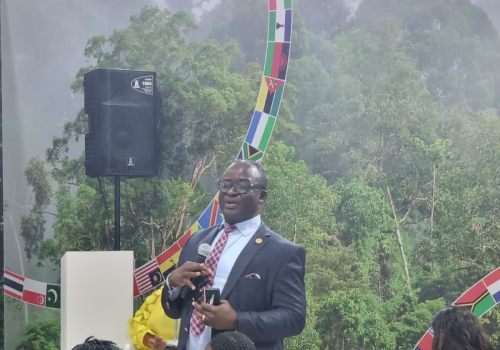The Southern African Development Community (SADC) Great Green Wall Initiative (GGWI) is going to be successful, drawing lessons from the Sahara and Sahel Region where a similar initiative has been implemented over the past 15 years, a representative of the African Union (AU) has said.
In May 2022, the AU announced plans to extend the “Great Green Wall” project to the SADC Region due to the impacts of climate change in some areas of the southern parts of the continent. The move comes in the wake of the existence of the two deserts in the SADC Region, the Namib in Namibia and the Kalahari in Botswana, and the GGWI project aims to combat land degradation and increase resilience in vulnerable communities in arid lands.
Speaking during a side event convened by the SADC Secretariat alongside the UN Conference on Climate Change’s 27th Conference of Parties (COP27) on 11th November 2022, a representative of the African Union and Coordinator of the Sahara and Sahel Great Green Wall Initiative, Dr Elvis Tangem said lessons and the best practices learnt in the Sahel will be implemented in the SADC Region. The event also sought to strengthen networks for cooperation with other partners and to accelerate the implementation of GGW in SADC Countries.
Dr Tangem said COP27 was the best platform to sell the SADC GGWI to the world and commended the President of the United Republic of Tanzania, Her Excellency Samia Suluhu, for meeting with the President of France, H.E Emmanuel Macron, and the Presidents of other SADC Member States to talk about the GGWI. The AU’s vision is to make the GGWI a Pan-African initiative and discussions towards that were on-going with its partners and Member States, he added.
“It was really heart-warming for us to have the AU, UNCCD (UN Convention for Combating Desertification), SADC Secretariat, the Commonwealth Secretariat and other partners, supporting the initiative. This shows that the struggle of land degradation we have been waging is known at the highest levels,” he said.
Dr Tangem said the SADC GGWI is not a copy and paste version of the Sahel GGWI and that the two areas have specific conditions. While the two regions have a common denominator of dry lands, they have different government systems, historical elements and approaches. Because of the different experiences, they can therefore share their experiences with others and maximise the impact on the ground.
“Let us get the highest level of policy and political backing. The Sahel went through 15 years of some kind of struggles, but it shouldn’t be so in the SADC Region. Let us get our Heads of State, and our ministers, behind us and the money will come. The problem is not the money, the problem is whether we are ready to absorb, whether we are ready to mobilise and with the backing of the AU, UNCCD, the Commonwealth Secretariat, the SADC Secretariat, and Member States in next one to two years, the SADC Region will have the kind of funding required to undertake large scale mobilisation and transformation,” he said.

